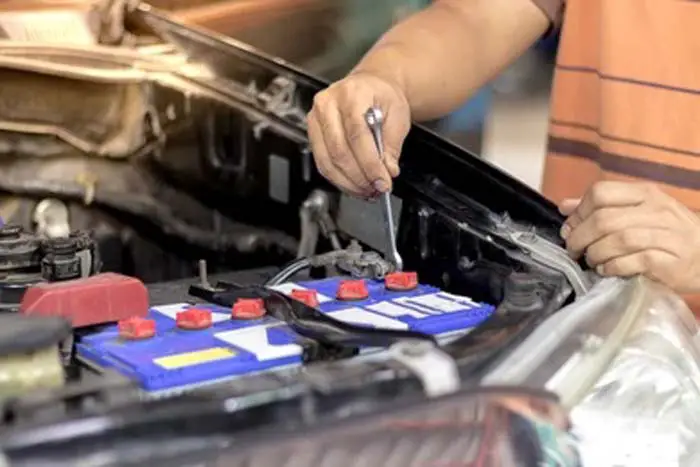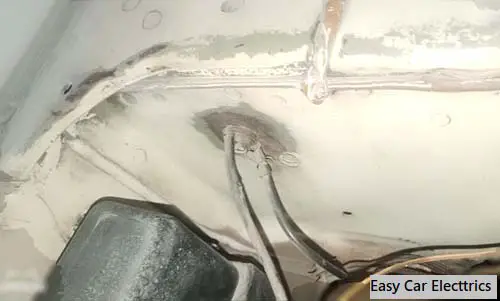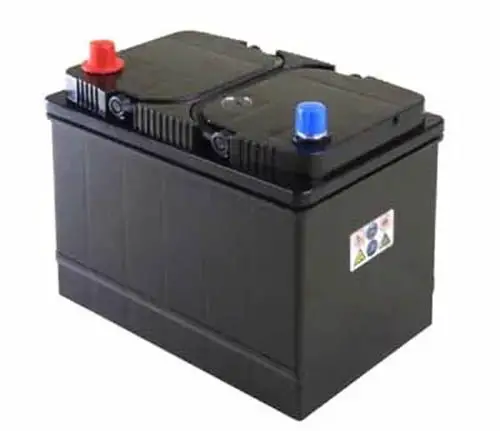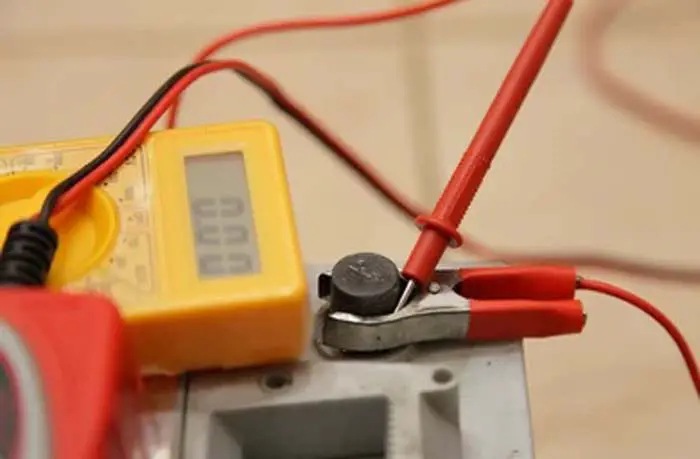
Ground connections in a car are essential for the proper functioning of its electrical system. They establish a link between the negative terminal of the battery, the car body, and the engine. This connection is usually made through a thick cable, and it serves as a path for electrons to flow back to the battery when they are not being used.
The ground strap is a heavy black wire that connects the negative terminal of the battery to the chassis of the vehicle. This helps to ensure that all electrical components are connected and share power from a single source, which improves safety and efficiency.
In this powerful article, you will learn how to ground a car battery properly and keep your car running smoothly. Get all the tips you need to make sure your car is grounded correctly for optimal performance.
What is Grounding
Before we delve further into the topic, it’s important to comprehend what “ground” means. Grounding plays a crucial role in the electrical circuit of a car. It’s responsible for ensuring that all electrical components in the car receive adequate current to function correctly, serving as the connection between the vehicle’s battery and chassis.
The Crucial Purpose of Car Grounding
Automobile electrical grounding is an important safety procedure that helps protect both you and your vehicle. Without proper grounding, the ignition system will underperform, you may experience random issues with charging, and you can easily damage other components of the electrical system. Earthing wires are essential components in electrical circuits and provide a pathway for electricity to disperse in case of an overload.
Additionally, adequately connected electrical system grounding can help prevent shocks, fires, and other hazards. It is important to follow all Vehicle Electrical Grounding Guidelines in your Maintenance Manual and ensure your vehicle is effectively connected to Earth for optimal performance and safety.
Related Post: How Many Ground Wires Does A Car Have: Revealing the Number
Signs of Poor Battery Ground in Car
Driving your car should be a smooth and pleasant experience. However, if your car has poor earthing, it can lead to various problems. Here are nine signs.
- Dim or Flickering Lights: If you notice that your lights are dimming or flickering, it could be a sign of bad earth.
- Warning Lights: Another sign of poor earthing is when warning lights start to come on frequently.
- Low Alternator Voltage Output: Bad ground can cause low alternator voltage output. When your alternator is not functioning correctly, it can result in low voltage output.
- Tapping Sounds: If you hear tapping sounds when you attempt to start your car, it could be a sign that your earth strap needs to be replaced.
- Dead Battery: If you find that your vehicle battery is continually dying despite being correctly charged, it could be due to poor earthing.
- Rough Idle: If your car’s engine performance is rough or unstable at idle, poor earthing could be the culprit.
- Radio Interference: If you hear static or interference on your car’s radio, it could be due to poor earthing.
- Stalling: If your car stops running unexpectedly while driving, poor earthing could be contributing to the problem.
Keeping an eye out for these signs can help you identify the issue promptly and get it fixed. If you’re unsure or need help, always consult a professional mechanic. Don’t let poor earthing compromise your car’s safety and performance.
Necessary Tools and Safety Precautions
Preparation is essential when it comes to grounding your car battery properly, as specific tools and equipment are required for a satisfactory outcome. These may include
- Pliers,
- Wire cutters,
- Sandpaper,
- Wrench,
- Grounding strap
Safety measures must be taken as earthing a car’s live battery can pose a threat if conducted inappropriately. Essential precautions include wearing rubber gloves, isolating the battery by disconnecting it from its source of power and refraining from contacting metal parts of the car.
How To Properly Ground A Car Battery + 3 Ways To Ground A Car Battery

There are three main ways to ground a car battery to an earth source.
- 1. Directly to the Earth Battery Terminal: The first and most common method involves connecting the negative battery cable to a metal surface on the vehicle’s frame or engine block directly.
- 2. Using a Dedicated Grounding Cable: Many car audio enthusiasts prefer to use a dedicated earthing cable that runs from the earth battery post to a designated grounding point on the chassis.
- 3. Grounding To The Block Of The Engine: Lastly, in some instances, it is more effective and also the best place to ground the battery directly to the engine block instead of the chassis.
An important point to be considered here is that the cable attached must be black because this cable represents the negative post of the battery. Now, below is the procedure for clamping a vehicle battery to the earth source.
- Always use a heavy ground cable to connect the earth battery terminal to the engine block or frame of the car as close to the starter as possible.
- Find the factory ground point and clean it with a steel brush and contact.
- Buy Certified 2 AWG Gauge 19 Inches Negative Battery Cable Wire with Top Post Terminal – Heavy gauge good-quality ground cable for automotive.
- Securely connect one end of the wire to the frame and make sure any paint is removed from both surfaces for proper contact.
- Connect the other end of the wire to the negative battery terminal, being careful not to touch any other parts of the battery or engine while doing so.
- Before starting your vehicle, ensure that all connections are tight and secure to ensure a proper connection.
- In the last step, you must connect the positive post of the battery to a live one to complete the path of the circuit. This will complete the circuit by having a path for the flow of the ground current.
A common belief is that we require more than one cable to ground the vehicle but this is not true. One heavy gauge cable is sufficient for good grounding. But an important point to consider is that the wire must be solid. Because a low-quality cheaper wire will create various issues in the future.
Advantages of Linking Ground Wire Properly

- It Helps Reduce Electrical System Malfunctions:
- It Can Help Protect Your Car From Damage:
- Grounding Can Help Maintain Optimal Battery Performance:
- It Can Help Power Accessories More Efficiently:
1. It Helps Reduce Electrical System Malfunctions:
By properly linking your vehicle battery to the earth wire, you can help prevent automotive electrical system malfunctions and keep it running smoothly.
2. It Can Help Protect Your Car From Damage:
Appropriately grounding your car battery can help protect it from damage due to electrical surges and shorts, keeping it running for longer.
3. Grounding Can Help Maintain Optimal Battery Performance:
A Reliably grounded battery can help maintain its optimal performance over time, ensuring that you get the most out of your car’s electrical system.
4. It Can Help Power Accessories More Efficiently:
By properly grounding your car battery, you can help power your accessories more efficiently, saving you money in the long run.
Car Grounding Maintenance: 8 Simple Steps
Maintaining your car’s earthing system is crucial to ensure that your vehicle runs smoothly and safely. The following listicle provides eight simple steps that every car owner can take to properly maintain their car’s earthing system.
- Start By Cleaning The Earth Cables: Professional mechanics always start by cleaning the earth cables. Carmakers use the steel body as the return earth path, so when the cables are corroded or dirty, the car may not start or run properly.
- Replace Or Add An Engine-To-Chassis Earth Strap: One of the best things you can do to help ensure a properly earthed vehicle is to replace or add an engine-to-chassis earth strap. This is an essential earth wire, but it isn’t the only one. Many of the components in your vehicle have much smaller earth wires of their own.
- Use A Jumper Cable: This is a simple yet very effective method. All you’ll need is one jumper cable. You need the cable to connect the battery’s negative post to the chassis of the car.
- Check The Battery Posts: Clean and tighten the battery connections regularly. A loose or corroded battery post can create a weak or intermittent electrical connection.
- Don’t Forget The Engine And Transmission Grounds: If you don’t know where all the engine or transmission grounds are located in your car, you may need to consult your vehicle repair manual. Make sure that all of the engine grounds are clean and properly connected.
- Check The Earthing Pints For Lithium-ion Batteries: It is EXTREMELY important to properly maintain your lithium-ion batteries. Make sure that the earthing points are clean and free of debris.
- Be Cautious When Working With Electrical Components: If you aren’t comfortable with electrical repairs or don’t have the proper tools or knowledge, it’s best to leave the job to a professional.
- Have A Routine Maintenance Schedule: Develop a routine maintenance schedule to inspect and maintain your car’s earthing system. It’s an easy task that will help prolong the life of your vehicle.
Maintaining your car’s earthing system may seem like a small detail, but it can have a huge impact on your vehicle’s performance and safety. Taking the time to perform these simple steps can save you time and money in the long run.
FAQs
The negative cable indicates the ground connection of the battery and is mostly connected to the chassis of the vehicle which can be removed easily without the creation of a spark. As a tip, always disconnect the live battery’s positive terminal first before disconnecting the earth terminal.
Yes, it is compulsory for the proper functioning of the vehicle to have a ground terminal. You will experience many issues without an earth wire like issues with the charging system and stuff like that.
It is not recommended to attach the earth terminal of the dead battery first because it can initiate an explosion so it is very dangerous. To perform any such action, you must check the instruction manual of your vehicle to prevent any accident.
Metal connectors are present at both ends of an earthing strap. A wire lacks the braided design because it consists of a single strand so it is not recommended for earthing. Especially, in heavy-duty applications, straps are preferred for earthing instead of a wire.
The ground wire needs car consists of a connection from the battery to the block of the engine. With the help of a mounting point, the alternator is earthed directly to the block of the engine, in this way, engine block acts as an electrical earth distribution block. And to secure more earth wires you just need to find a suitable bolt.
Sign Up




